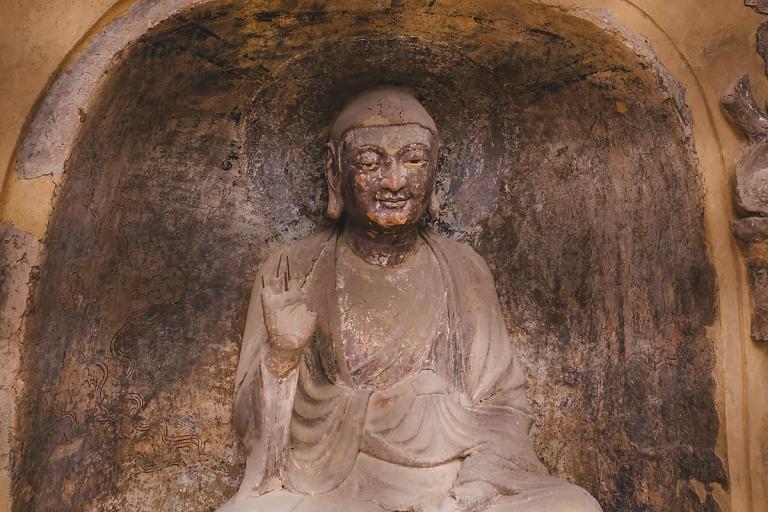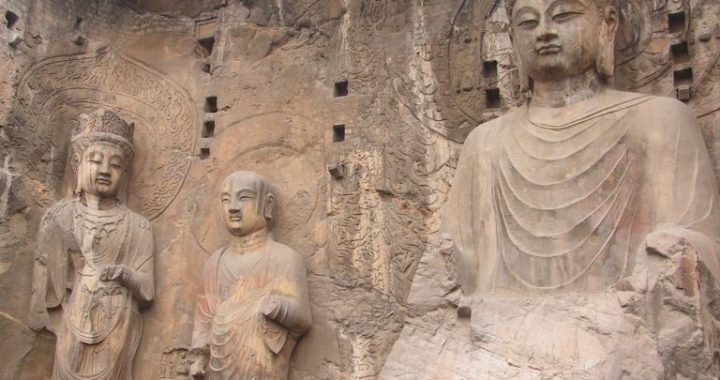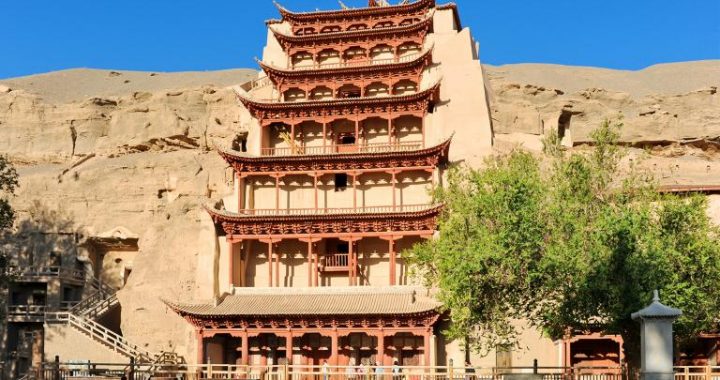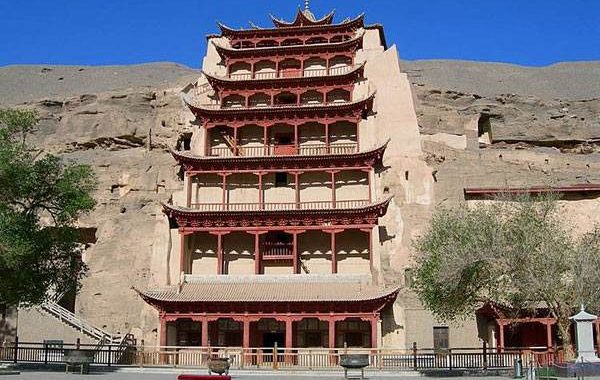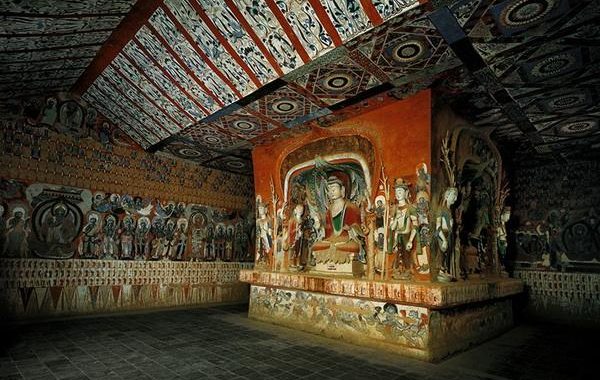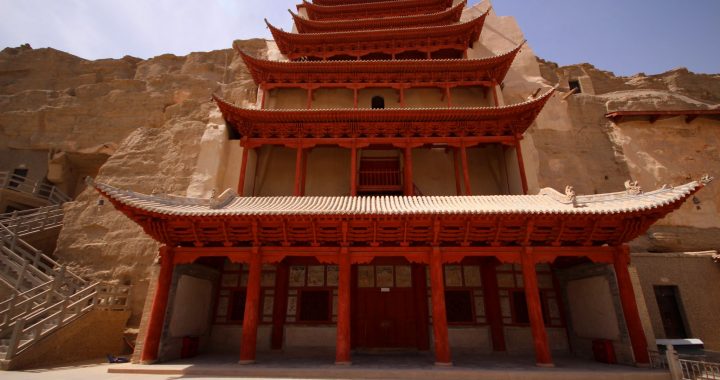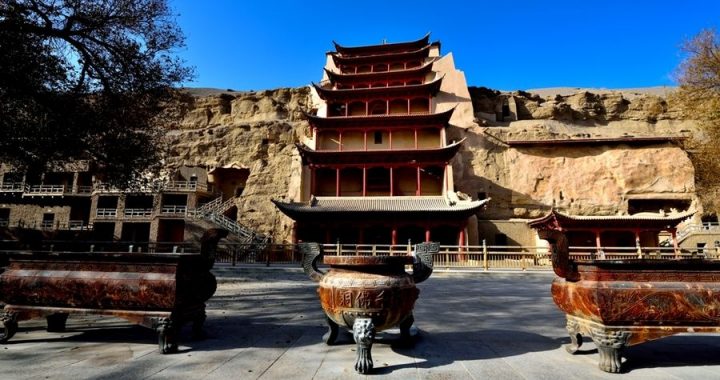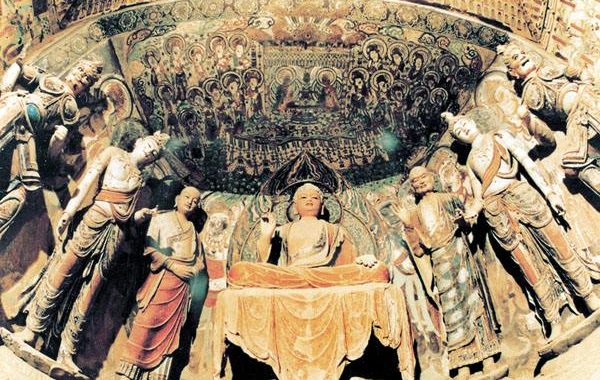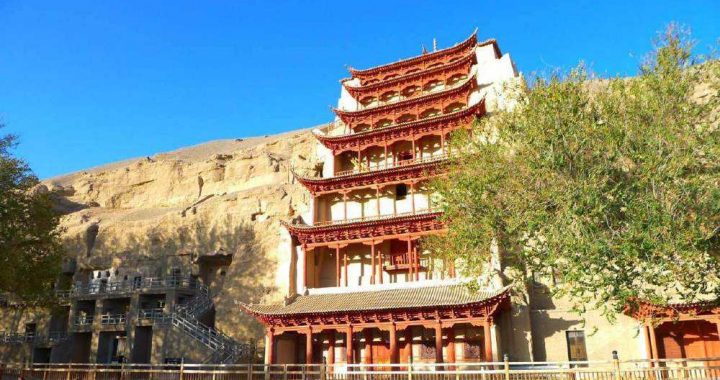Smiling Buddha in the Maijishan Grottoes
2 min readAs one of the four famous grottoes in China, the Maijishan(Haystack Mountain) Grottoes are appreciated for the quality and quantity of the clay sculptures enshrined there. Located southeast of Tianshui City in Gansu Province, Maijishan got its name from its haystack-like shape.
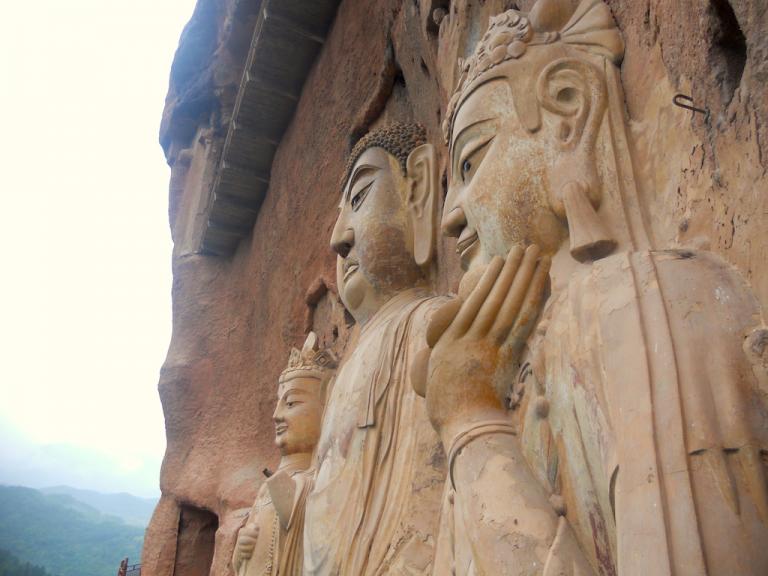
The sculptures in the Maijishan Grottoes evoke a strong secular flavor alongside the obvious influence of Indian sculpture. The statues, though representing theBuddha and his disciples, are wrought with as many human features as possible. The countenance of the statues expresses calm compassion, rather than the more usual far and distant facial expression. The majority of the statues nod and smile in a natural manner, and the contours of their robes are smooth as if flying.
The group of sculptures in Grotto 44 built during the Western Wei Dynasty(535-556) is exemplary of the Buddha statues in the Maijishan Grottoes. The main Buddha statue, sitting in the center of the group of sculptures, is 160 centimeters tall with a woman’s figure, who wears his hair in a chignon with a whirlpool pattern, his hairline executed in a cloud shape. An ornamental knotdecorates his chest, and a kasaya wraps his shoulders and cascades down, with the draping curves of the robe smoothly, clearly and beautifully outlined. Traces of color can be seen on his clothing and hairline. He has long and thin eyebrows, a slightly inclined head, smiling mysteriously and kindly. One can only imaginehow beautiful the statue must have been when it made its debut in this world!
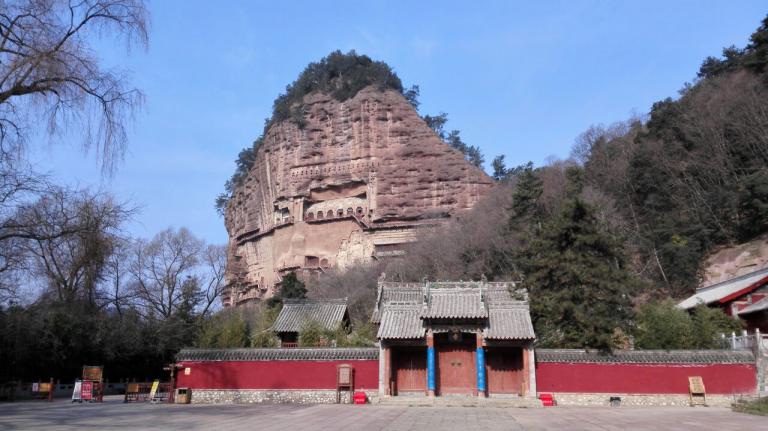
According to the Buddhist sutras, when Sakyamuni gave a sermon, he always smiled. This statue has not only a smile on his face but a smile seeming to spread all over his body. The smiling countenance and the gentle contours of his body effectively display the Buddha’s magnanimity, composure and elegance.
When this collection of statues in Grotto 44 was created, China was experiencing one of the most traumatic periods in its history, with endless wars claiming the lives of countless people, and the survivors plunged into an abyss of suffering. These statues face the despondent secular world with a smile and magnanimity, thus giving people faith in life.
